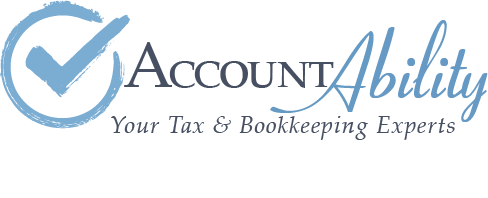Everything You Need to Know Paying Into Taxes and Quarterly Tax Payments
The rule is to pay as you go, not all at the end of the year. Waiting until the end can cost you extra in the form of penalties and possibly interest. That’s why your employer withholds taxes throughout the year. For those that are self-employed, or if you have additional, substantial income, not through an employer, you’re required to pay the IRS quarterly. Getting a tax refund means you paid more than you needed to and have given the government an interest-free loan. The question is, how do you know what you’ll owe in taxes? The right answer is – it depends.
DOWNLOAD the Estimated Taxes Handout for more specifics.
My only source of income is through my employer. What do I need to think about when paying taxes throughout the year?
If you are an employee of a company, money is taken out of your paycheck for taxes each pay cycle. This is to be sure the majority of your taxes are paid ahead of time so you don’t owe a huge chunk, or at all, at the end of the year. When you first start at a job you’re asked to fill out Form W-4 which creates your tax profile. This profile tells your employer where on the withholding charts your withholding will be based. This takes into account your gross pay minus any pre-tax benefits such as retirement contributions or insurances, if you are single or married, or if you have dependents. What is not taken into consideration would be other sources of income like your spouse’s wages, retirement distributions or other income. If you choose wisely, you don’t have to submit any additional estimated payments because it’s all paid through your paycheck.
Lots of people choose to land in the refund zone. They look at their refund as a forced savings plan. If that’s your goal, our advice is to shoot for a $2,000- $4,000 refund. Any more than that is tying up too much of your money for too long. Keep in mind, if you follow the worksheet on the W4 form, the intention is for you to break even at the end of the year, not to be in the refund zone. From the government’s perspective, a $1,000 swing in either direction is a win. If owing even a few hundred dollars at tax time will stress you out, do not rely solely on the withholding charts. Meaning, if you like getting a big payout at tax time, you should consider designating extra money to be set aside on your W-4. How much you designate is up to you and we usually ask out clients to decide based on what they hope to get back when they file. The more you want in the refund, the more you need to set aside.
I have self-employment income, now what?
Then you should really be planning to pay into taxes quarterly. Receiving money directly and not through an employer payroll system means money isn’t being paid in or even set aside unless you’re doing it on your own. To calculate your payments, you need to estimate your net business income as one piece of the puzzle. The other puzzle pieces include deductions, credits, and plans for the remaining months of the year. If you find that your income varies quite a bit then you may want to take this estimate based on your quarterly performance.
To do this, we recommend tracking income and expenses using software like QuickBooks and partnering with tax accountants like us to create those estimates each quarter. We offer our client’s 50% off QuickBooks Online as an elite QuickBooks ProAdvisor. This will allow you to track your expenses, balance your accounts, send invoices and much more.
If you are paying quarterly, it’s smart to be setting money aside so you don’t get hit with 3 months of tax payments without being prepared for it. We typically counsel our self-employed folks, especially new business owners, to set 15-25% of each client payment aside. It’s a rough guess but builds the habit of separating out the money that is the government’s money from the money that is yours.
What if I make additional income but it’s not through a business?
The rule of thumb is you should make estimated tax payments if you expect to owe tax of $1,000 or more when you file your return. This is true whether it’s from self-employment or any other kind of income where taxes aren’t already withheld.
When do I need to pay quarterly taxes?
April 15th
June 17th
September 16th
January 15th the following year
How do I make payments?
It’s super easy to pay right online and ensures the money goes to the right place. Make sure you pay using a checking account and not by credit card because you incur an additional fee.
What happens if I don’t pay quarterly?
If you don’t pay your quarterly taxes, you are charged a penalty which is basically an interest charge for not paying your taxes throughout the year. This interest payment is equal to 6% for 2019. To avoid paying any more than necessary, you want to pay your quarterly tax payments on time.
This year’s second quarterly tax payment deadline was June 17th. Are you on track? Getting your finances in order can feel super overwhelming but it certainly doesn’t have to be. It’s mid-year and the perfect time to get your finances straight. Reach out to us at 603-432-8291 if you need help streamlining your financial management system for maximum deductions and tax savings at the end of the year.
Powered by Weatherby Media LLC

